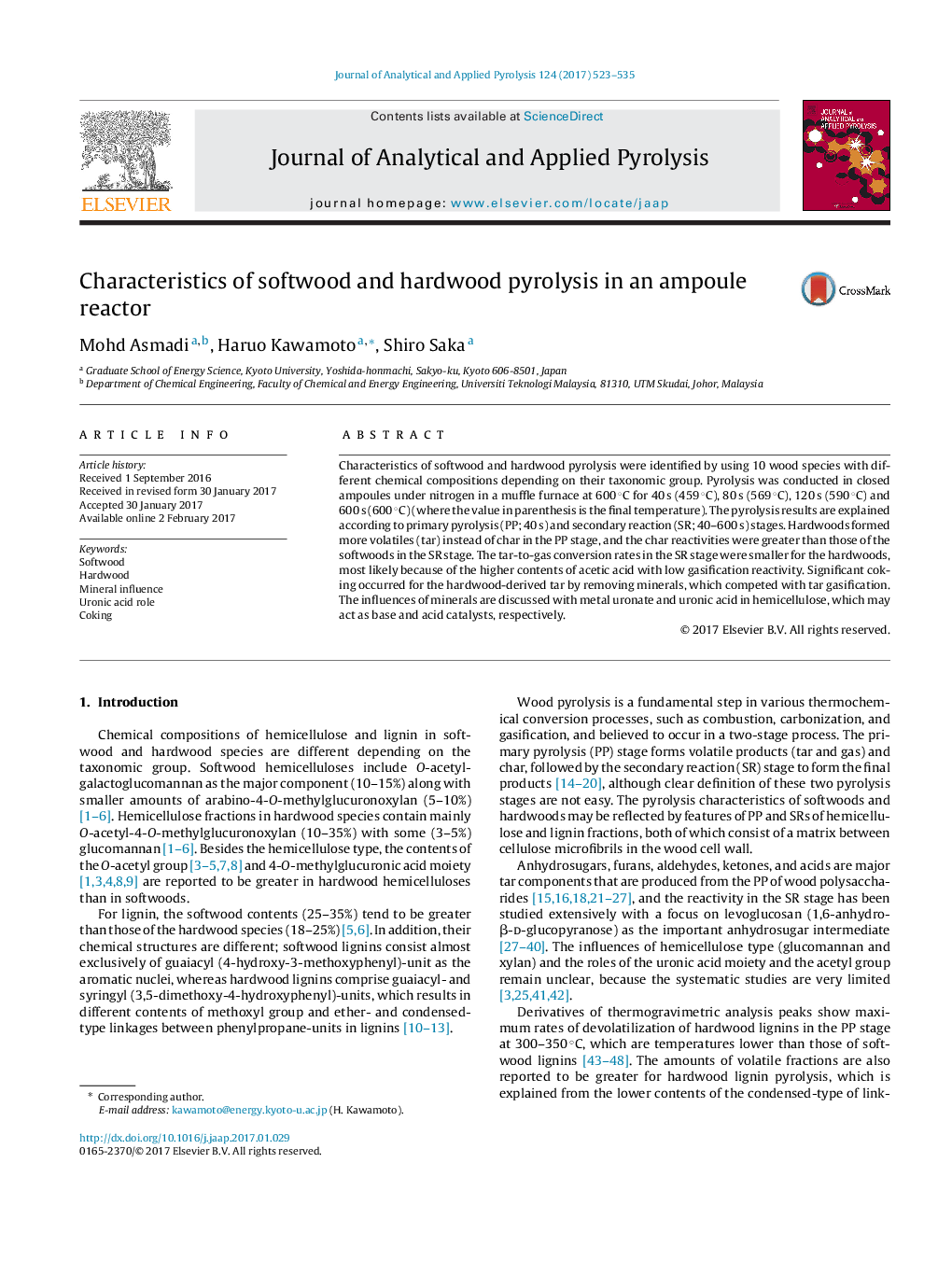| کد مقاله | کد نشریه | سال انتشار | مقاله انگلیسی | نسخه تمام متن |
|---|---|---|---|---|
| 5134625 | 1492953 | 2017 | 13 صفحه PDF | دانلود رایگان |

- Hardwoods produce larger amounts of volatiles instead of char.
- Hardwood tar-to-gas conversion was slower because of higher acetic acid content.
- Syringyl-derived lignin tar disappears in early secondary reaction stage.
- Removing minerals changes tar compositions, which enhances gas formation.
- By removing minerals, significant coking occurs from hardwood primary tar.
Characteristics of softwood and hardwood pyrolysis were identified by using 10 wood species with different chemical compositions depending on their taxonomic group. Pyrolysis was conducted in closed ampoules under nitrogen in a muffle furnace at 600 °C for 40 s (459 °C), 80 s (569 °C), 120 s (590 °C) and 600 s (600 °C) (where the value in parenthesis is the final temperature). The pyrolysis results are explained according to primary pyrolysis (PP; 40 s) and secondary reaction (SR; 40-600 s) stages. Hardwoods formed more volatiles (tar) instead of char in the PP stage, and the char reactivities were greater than those of the softwoods in the SR stage. The tar-to-gas conversion rates in the SR stage were smaller for the hardwoods, most likely because of the higher contents of acetic acid with low gasification reactivity. Significant coking occurred for the hardwood-derived tar by removing minerals, which competed with tar gasification. The influences of minerals are discussed with metal uronate and uronic acid in hemicellulose, which may act as base and acid catalysts, respectively.
Journal: Journal of Analytical and Applied Pyrolysis - Volume 124, March 2017, Pages 523-535